EASTHAM — We were at First Encounter Beach at 7 p.m. on Wednesday, Aug. 23. People filled the beach and parking lot, watching the sun set across Cape Cod Bay, and the sky glowed red, orange, and yellow.
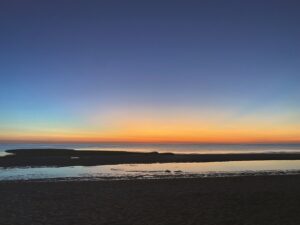
After the sun was safely below the horizon (never aim a telescope at the sky when the sun is up without a proper solar filter in place), I turned my two telescopes to the waxing crescent Moon and then Saturn when it rose later in the evening. Dozens of people stopped to look as they left the beach, some staying for an hour or more to watch the night sky in a way that they don’t usually.
The Moon and Saturn are, along with Jupiter, the showstoppers of the night sky: bright, vivid, and dramatic. Then there are what amateur astronomers call the “faint fuzzies.” These are dim, indistinct, and subtle. Yet they can be the most astonishing objects you might observe with a backyard telescope.
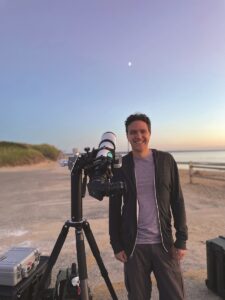
My telescopes are excellent instruments for the showstoppers but don’t perform well with the faint fuzzies. So, things got really exciting at First Encounter when another amateur astronomer, Matt Kamholtz, who lives in Brookline and Wellfleet, arrived with a huge 15-inch telescope.
Telescopes are often described by the width of their apertures. The larger the opening, the more light it gathers and the “deeper” you can see. That is, you can see fainter objects. A bigger aperture can also resolve more of the detail in any object, bright or faint.
This increased performance comes at a cost in portability. My telescopes have four-inch and seven-inch apertures, weigh about 10 pounds each, and are 13 and 24 inches long; they are considered small to medium-size instruments. Kamholtz’s 15-inch telescope, weighing over 100 pounds and measuring over six feet long, is what we call a light bucket: a behemoth that scoops up light and excels at showing off the faint fuzzies.
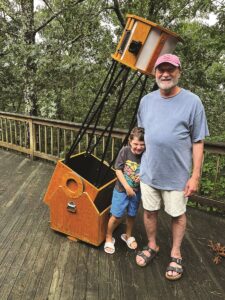
Matt’s telescope attracted a lot of attention. When he pointed it high in the sky, observers had to climb a stepladder to look through it. At the eyepiece, they were treated to views of distant galaxies (collections of billions of stars orbiting an immense black hole, as our own Milky Way galaxy does), wispy nebulae (glowing gas and dust, the remnants of exploded stars or stellar nurseries where new stars are forming), and sparkling globular clusters (tightly-packed clusters of stars that reside within our galaxy). Many of the faint fuzzies are impossible to see with my telescope. Others appear extremely faint, requiring averted vision and a lot of imagination.
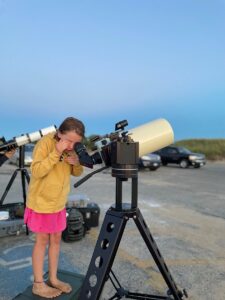
Along with the cosmic scale and grandeur of these objects, the distances from where they are to Earth is great. The Moon is about 220,000 miles away, or just over one light-second. Saturn is, on average, 800 million miles away, or about 80 light-minutes from us. People at the beach were amazed to learn that some of the faint fuzzies are millions of light-years away, so the light they were seeing that night began its journey to Earth while our prehuman hominid ancestors were learning to walk upright and make tools.
The day before that memorable event at First Encounter, I set up my telescopes at the Wellfleet pier. Tourists stopped by as they strolled the beach with ice cream from Mac’s; I met people from Maryland, New Jersey, New York, Massachusetts, and Quebec. I was also happy to meet local residents. My last guest at the telescope that night was a fisherman who jumped out for a look before leaving the pier in a truck filled with the day’s catch.
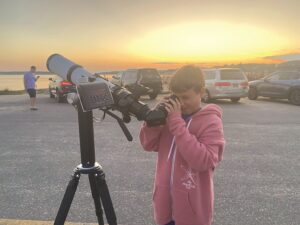
It was wonderful to have so many children at both events. Their excitement about seeing the stars and planets is inspiring. And a good number of adults were equally excited to have their first looks at Saturn’s rings and the Moon’s sharp-edged craters.
After over 20 years of observing, I still feel the same way; it’s why I love setting up my telescope for the public. Thank you to Matt for bringing his to First Encounter and to everyone who stopped by the beach and the pier to look and talk. Clear skies!



